Photo by Alvin Báez Hernández | Photo from FEMA
The communal aqueduct of the Santas Pascuas Sector in Ponce has not received recovery funds, according to COR3 data.
Of the 242 community aqueduct systems legally registered in Puerto Rico as franchises, 31% have not requested recovery funds for the damages caused to infrastructure by Hurricanes Irma and María in September 2017, according to data from the Government’s Central Office of Recovery, Reconstruction and Resiliency (COR3).
Although the reasons are different for each community aqueduct, not owning the land where the equipment and wells are located, the number of documents that the federal government requires, and the lack of orientation to those who administer these systems, are some of the causes for which these entities fall short of the requirements to apply for funds from the Federal Emergency Management Agency (FEMA) and COR3.
As of this week, a total of 167 community aqueducts have requested recovery funds, said COR3 press spokeswoman Maura Ríos Poll. Of these, 150 have already gotten the obligation of the money, according to data from the COR3 website, and 21 of those have not yet received any disbursement.
There are 242 community aqueducts recognized as franchises by the Department of Natural and Environmental Resources (DRNA, in Spanish).
In Puerto Rico, there are other systems not affiliated with the Puerto Rico Aqueduct and Sewer Authority (PRASA), that operate informally because they do not meet the requirements established by the DRNA to recognize them as a water franchise. This group of informal community aqueducts, whose number is not known, also does not comply with the requirements to access FEMA recovery funds.
Because they do not have title to the land where many of the community aqueducts are located, their operators depend on the “goodwill” of the owners or heirs of those areas to allow access to them. This situation hampers the operation of the systems and represents an obstacle to formalizing the request for funds for the repair and maintenance of the infrastructure, according to spokespersons for these organizations. When asked by the CPI if ownership of the land is a requirement to request the funds, the COR3 said that FEMA should be the one to answer that question, but the federal agency could not immediately answer.
“One of the biggest problems that the aqueducts have is that they do not have ownership of the land where the wells are. You only have the authorization of the person who was the first owner of the property. Many recovery funds are for renewable energy and the heirs [of the land] don’t allow them to take more space. Many of these heirs don’t know how [the water problem] could affect them. But it isn’t only the heirs, but also those who have bought these lands and don’t think that these wells are there,” the president of AsoCaguas and the delegate of the Association of Community Aqueducts, Ramón Vega, told the Center for Investigative Journalism (CPI, in Spanish).
A legislative bill was submitted on Dec. 6, 2021, to guarantee the access of community aqueduct operators to private properties where wells and equipment are located. Senate Bill 694, authored by Sen. Gretchen Hau, seeks to amend the Law for the Conservation, Development and Use of Water Resources to allow managers, representatives and operators of aqueduct systems not affiliated with PRASA to “carry out water quality tests, inspections, maintenance work or improvements and infrastructure works,” as well as “establish fines against those who prevent or obstruct free access to these systems and facilities.”
The bill got a positive report in the Senate and the endorsement from the Department of Health (DS), the Puerto Rico Non-PRASA Aqueduct Systems Organization (OSAN, in Spanish) and the Puerto Rico for the Right to Decent Housing group, among others. The bill was approved in the Senate on March 17.
The House Natural Resources, Environmental Affairs and Recycling Committee submitted a positive report on the measure on June 21, but it has not gone to a vote.
Community aqueducts provide drinking water to about 125,000 people, according to data published by scholars Alicea Martínez and Ríos Dávila in 2016. They cover communities where PRASA lacks the capacity to provide the service adequately. Most are in rural sectors and to operate, they must report to the government, mainly the DRNA and the DS. Communities that have this type of aqueduct organize themselves as nonprofit corporations to manage their finances, access government funds, and participate in programs.
The challenges of bureaucracy
A year after Hurricane María, the community of the Camino Los Pagán sector in Adjuntas organized and created a community aqueduct that feeds from a well.
“First, we had to organize the community to create a nonprofit organization to handle the finances, the money, and to be able to receive money from other sources. After we set up the corporation, we began to look for alternative funds. The first was from USDA Rural Development [United States Department of Agriculture]. They began asking for more documents and we couldn’t provide them because what they were asking for is proof of ownership of the land and we couldn’t fulfill that. We’re working on it,” Orlando Peña, president of the Camino Pagan Residents Association Inc. and member of OSAN, explained to the CPI.
As for the recovery funds that were made available after the 2017 hurricanes, the Adjuntas community leader said “sometimes these funds are very difficult to access. First, they don’t give it the publicity it deserves. Many aqueduct operators are unaware of these funds. In other cases, they also ask for paperwork that many community aqueducts don’t have either, so it becomes very difficult to apply for the funds.”
In the case of the community aqueduct of the Buenos Aires sector in Caguas, its president, Miriam Matos Díaz, argued that the COR3’s documentation requirements, which she considers excessive, such as the bank statement with balance information, prevents her organization from receiving recovery funds that have already been obligated.
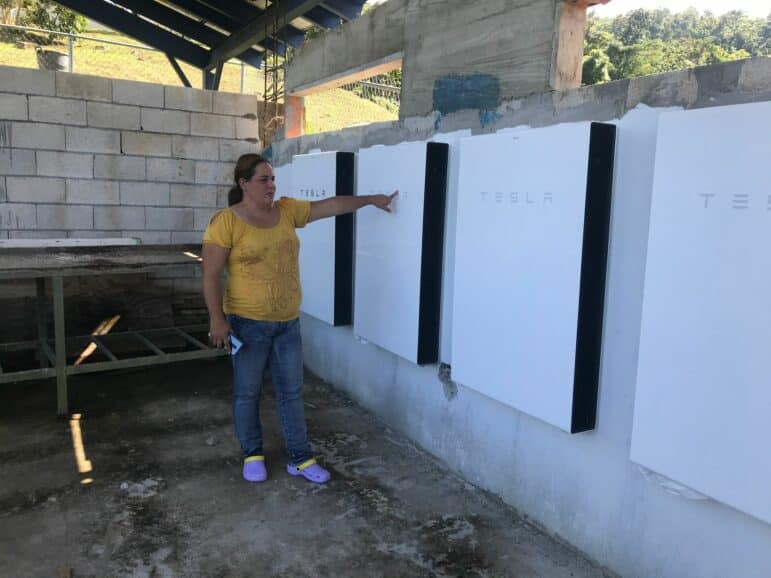
“Everything [we request] is for infrastructure: the fences of our well’s tank, the electrical panels, the pump. Our electricity meter went out [because of Hurricane María]. Therefore, there was damage to the pump and the motor. The electrical panel was bent. The gates were on the ground. Trees fell on the aqueduct gates, and they sank. The ladder was ripped from the tank. Many pipes in the tank were damaged. The tank began to leak,” said the president of OSAN.
Vega agreed with Peña and Matos Díaz, adding that when applying for recovery funds or other sources of financing, they face the fact that they do not have the exemption documents that the government requires, their registration is not current with the State Department, or they are not active on the federal government’s System for Award Management (SAM) platform.
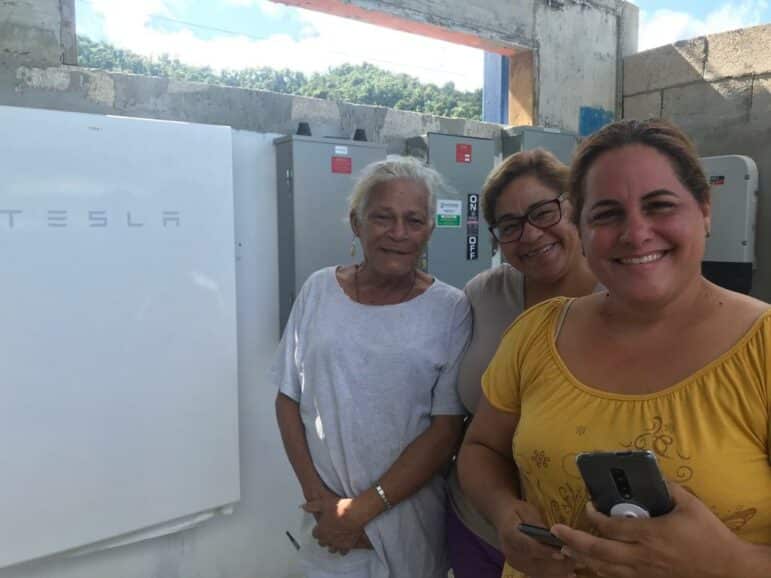
COR3 acknowledged some of the problems presented by the spokespersons for community aqueducts.
“Many of the aqueducts have a board of directors with limited resources. On the other hand, there are applicants with limited access to technology and little or no project management knowledge. This is a challenge for the completion of the paperwork required by the FEMA Public Assistance Program, we can mention among others: grant agreements, Corporate Resolutions, Requests for reimbursement/advance, documentation required for the project formulation process, to carry out the project after the obligation, and work and execute the Procurement, and document the process of construction, disbursements, and closure of the project. However, once our work team identifies these limitations, it intervenes with the applicant to help them as much as possible,” said COR3 in written statements sent to the CPI.
Water as a human right
PRASA’s water management shortcomings would suggest that more communities could consider the possibility of developing their own private aqueduct system. Aspects such as the loss of nearly 60% of drinking water, admitted by PRASA, and the lack of proper maintenance of the dams, which are full of sediment, could generate interest in the community aqueduct model.
Droughts, soil erosion, and extreme rainfall events because of the climate crisis affect the service that PRASA provides, as well as the stability of the electrical system, which sometimes affects the operation of certain PRASA substations.
Although the development of more community aqueducts seems like an ideal alternative, the bureaucratic obstacles, and the difficulty in getting enough people from the community who want to get involved in the project, discourage the creation of more of these types of systems, Omar Pérez Figueroa, researcher of water management issues, said.
“It would be ideal [to have more community aqueducts], but it isn’t so easy because it requires the communities to be organized and that is precisely one of the challenges. Many communities are not organized,” the doctoral candidate in Urban Planning and the Public Policy Program at the University of California at Irvine told the CPI.
Pérez Figueroa, who collaborates with OSAN and several community aqueducts, recognizes that one of the main challenges of operating community aqueducts is that in most of the communities where these systems are located, their residents live below poverty levels and have little formal education.
There is also little or no participation of young people, leaving the burden of running and operating community aqueducts to older adults. During the lockdown periods at the start of the COVID-19 pandemic, many of these people living in hard-to-reach rural areas were unable to communicate with neighbors virtually. This, Pérez Figueroa said, limited the collection of water bill payments because many communities still depend on in-person payment collections.
“These situations limit access to water. Water should always be seen as a human right,” Pérez Figueroa said.
Monthly operational costs represent one of the main challenges of these systems. They must submit monthly reports to the DS on the quality of the water. This process requires hiring private laboratories. Contrary to PRASA, the community aqueducts do not have access to government laboratories in the DS.
“We spend approximately $11,000 a year. We must do the bacteriological [test], which cost increased, it used to be $65, now it is up to $80. That’s every month. That’s besides the lead and copper test, which should be done every six months, and that went up from $450 to $600. That depends on the lab. I’m talking about the lab that provides service to the Buenos Aires aqueduct. And the chemical [test] that was $2,500 and is now at $3,500,” said Matos Díaz, referring to the aqueduct that she manages in the Buenos Aires community in Caguas.
“We’re regulated much more than [PRASA], which isn’t even supervised. They are not as regulated as we are. And it’s supposed to be that way because they’re processing and treating wastewater. Our water comes out almost pure from the spring. Beyond being presidents or managers of a community aqueduct, we’ve had to learn to be chemists, to know how to take measurements and to know about everything that we’re offering to our community. This is without considering the schemes that the government comes up with to get money from us,” added the Caguas community leader.
In addition to the expensive tests, the Department of Transportation and Public Works (DTOP, in Spanish) requires a $10,000 annual fee from community aqueducts for the use of the roads where the pipes are buried.
In August 2021, Rep. Jesús Manuel Ortiz González presented Bill 943 to exempt registered community aqueducts from paying this fee to the DTOP. Although it was unanimously approved in the House in September 2021, the bill is still stalled in the Senate Government Commission.
Changes in hydrological patterns
In the Dajaos sector of Bayamón, Manuel Merced remembers how, before Hurricane Georges, in 1998, one of the streams in the Riíto sector was at a high level. He even tells how years before this storm his children and other family members jumped off the bridge to take a dip.

Almost 24 years later, Merced talks about how the mid-June rains were not enough to make the “little trickle of water” grow back to where there used to be a significant current but is now surrounded by weeds. The rural community where he has lived since he was young did not confront water availability problems. They even had a community aqueduct that supplied them with the resource, even when the rest of Bayamón was cut off from PRASA’s service.
Now, the community aqueduct does not exist, the streams are increasingly dry, and PRASA interrupts the service every two weeks, without prior notice.
“Every couple of weeks they have to interrupt the water service without warning, because the water has to be cleaned because it isn’t reaching [the creek],” Merced told the CPI.
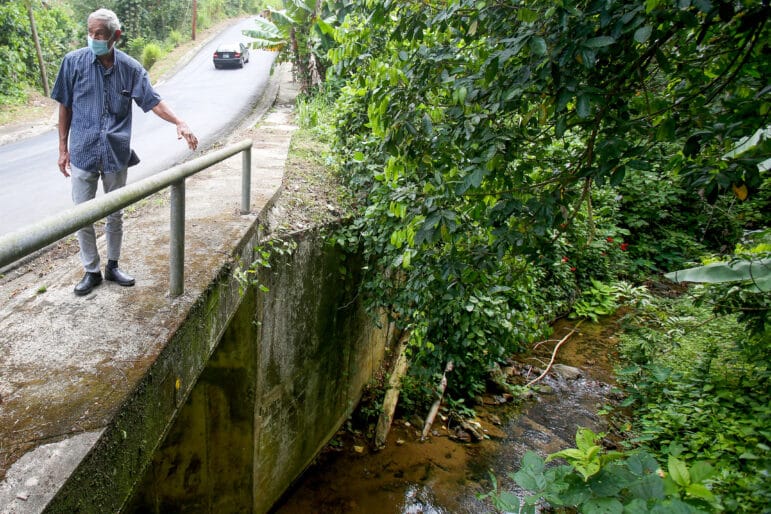
When asked if, given the problems and interruptions caused by PRASA, the community has considered developing a community aqueduct not affiliated with the government, Merced replied that they have already tried that strategy in the past.
“There was a community aqueduct here, but PRASA took it, and the politicians didn’t help us,” Merced lamented.
As in the Riíto de Dajaos sector in Bayamón, in the Camino Los Pagán sector in Adjuntas, the levels of the stream that for years supplied water to the community have dropped, leaving a rural aqueduct system useless. That led that community in the mountainous interior region to change their system and establish a community aqueduct from a well in 2018, which is fed by groundwater.
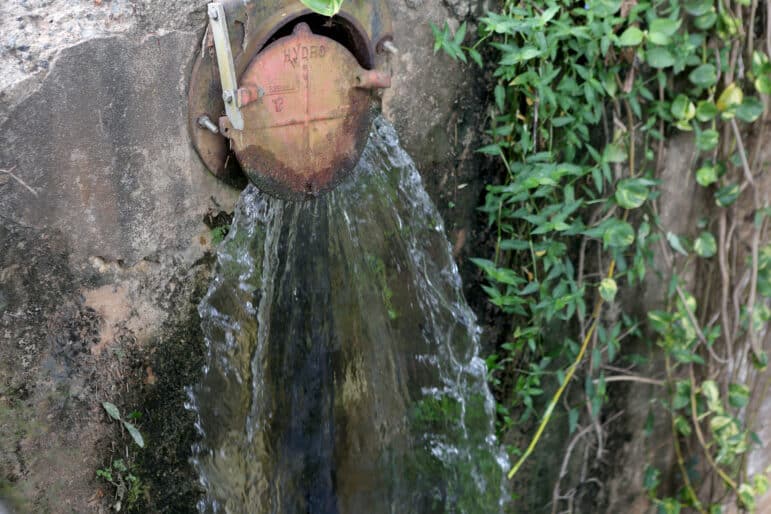
“The streams are no longer supplying the water as they used to. There are some that have already dried up,” said Orlando Peña, who presides over the community aqueduct in the Camino Los Pagán sector.
“FEMA gave us [recovery funds] for the losses of what we had when María hit, which were the stream aqueducts, the simple aqueducts and most of what was lost were pipes. But we haven’t received federal funds for the [well] aqueduct that we’re building now. We’re talking with FEMA and COR3 so that the funds they gave us for the old aqueducts can be used for the new aqueduct,” Peña explained.
COR3 told the CPI that the funds could be evaluated for the new project, “although changes in the amount originally approved” are not necessarily included.
The state of the streams and the drought that some of them are experiencing is something that must be investigated further, Puerto Rican Climatologist José Javier Hernández Ayala said. Since a large part of the measurement stations in Puerto Rico are in large rivers, it is hard to establish correlations with the streams, he explained.
“As a possible explanation for why these streams are drying up, it isn’t that it’s necessarily raining less in Puerto Rico, but rather that in certain sectors there’s less rain and in others more. In Puerto Rico in general we haven’t seen a significant change in rainfall. But when we go to each station and each area of Puerto Rico, there are certain sectors where there has been a decrease, in others it has increased, while in others it has remained the same,” added the researcher and professor at Sonoma State University in California.
“We must also look at how changes in land use, the immensity of some areas, such as the metropolitan region, and the orographic effect have contributed to affecting the hydrological cycle in certain sectors of the island,” said the also collaborator of the Puerto Rico Committee of Climate Change Experts and Advisors.
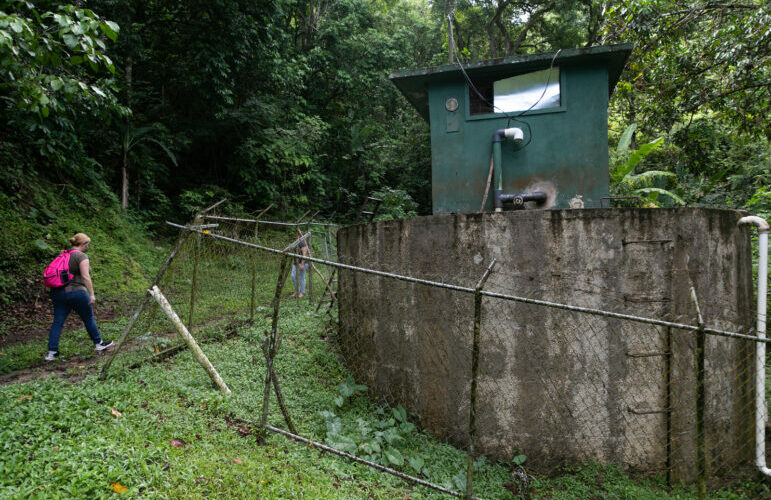
8 septiembre, 2022 LEER MAS
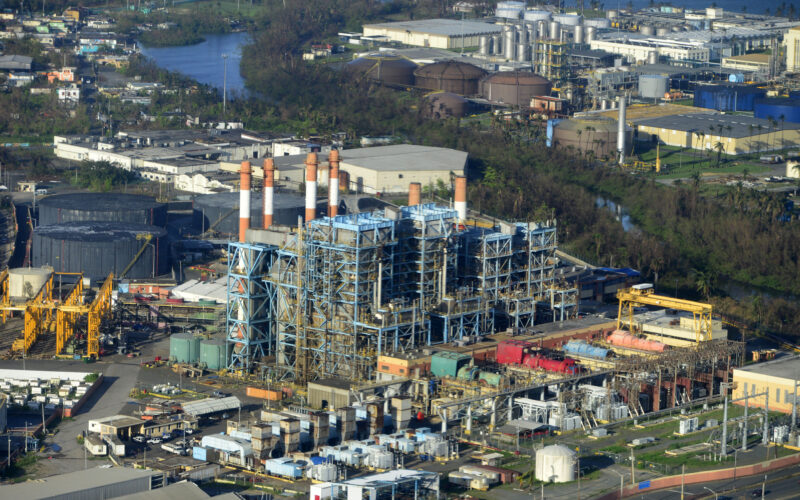
30 junio, 2022 LEER MAS